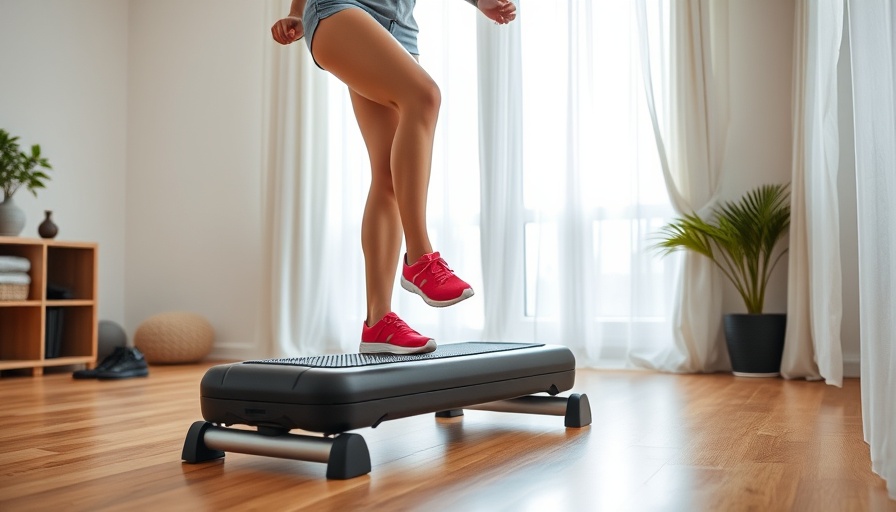
The Power of Building a Community Around Fitness
In recent years, the importance of fitness within faith communities, especially among members of the Seventh-day Adventist (SDA) faith, has gained significant traction. Fitness is not merely about physical health; it is a holistic approach to well-being that incorporates mental and spiritual health too. The video 'Week 3 Motivation: FB30 30 Day Challenge: Strength, Cardio, and Mobility' reflects this initiative well, emphasizing how a supportive community can elevate personal fitness journeys.
In 'Week 3 Motivation: FB30 30 Day Challenge: Strength, Cardio, and Mobility,' the discussion highlights how fitness can enhance community bonds, prompting us to explore its broader implications.
Why Members of the SDA Faith Community Should Embrace Fitness Challenges
Fitness challenges, particularly ones that are community-driven like the FB30 30 Day Challenge, promote not just individual dedication but also a spirit of fellowship. Participating in a structured program encourages members to support each other, share successes, and work through difficulties, creating a bond that can be spiritually uplifting. It aligns with the Adventist belief in health and healing, underlining the significance of honoring one’s body as a temple.
Practical Strategies to Stay Motivated in Your Fitness Journey
Motivation can wane, but equipping yourself with practical strategies can help maintain commitment. Setting specific, achievable goals is crucial. For instance, aiming to increase your mobility through specific exercises or improving your cardio endurance can provide clear benchmarks for progress. Furthermore, accountability within your community can spark friendly competition, keeping spirits high and participants engaged.
Understanding Health Through a Holistic Lens
Unlike traditional fitness programs that may focus solely on physical outcomes, the ”FB30 30 Day Challenge” integrates diverse workouts with a focus on strength, cardio, and mobility. This holistic approach resonates deeply within the SDA community. By emphasizing all aspects of health—physical, mental, and spiritual—participants are likely to foster a more profound inner connection, taking their fitness journey beyond mere exercise and into the realm of lifestyle transformation.
Future Trends in Faith-Based Fitness
Looking ahead, we can predict an increase in the intersection of faith and fitness. Programs that combine spiritual growth with physical health are rapidly gaining popularity. Churches and faith communities may soon host wellness retreats, outdoor activities, and fitness workshops designed to promote health—both spiritual and physical. Members of the SDA community are well-positioned to lead these trends, owing to their strong foundation in holistic health principles.
Implementing Mindfulness in Fitness
A critical element often overlooked in fitness discussions is mindfulness. Incorporating mindfulness practices into fitness routines can enhance concentration, reduce stress, and improve overall performance. This is particularly important for members of faith communities, as many seek fitness practices that align with spiritual values. Incorporating prayer or meditation before workouts can set a positive intention for participants, creating an enriched experience.
Community Engagement: Building Bonds While Building Strength
One of the most significant benefits of participating in fitness challenges is community engagement. As members of the SDA community come together for fitness initiatives, they reinforce interpersonal relationships. Friendships formed in these environments often extend beyond the gym or training sessions, creating a supportive network that fosters both spiritual and personal growth. These relations are powerful reminders of the importance of support within faith-based practice.
As we reflect on the insights from 'Week 3 Motivation: FB30 30 Day Challenge: Strength, Cardio, and Mobility,' we can recognize how fitness embodies more than just movement; it is a pathway to building a cohesive faith community committed to health.
Conclusion: Take the First Step Today
As you consider your own fitness journey, remember that each step you take can lead to holistic well-being that aligns with your spiritual values. So, gather your friends and family, and join a fitness challenge today. The sense of community, connectedness, and holistic growth awaits, making every effort worthwhile. Embrace the challenge, uplift one another, and thrive together in health!
 Add Row
Add Row  Add
Add 




Write A Comment